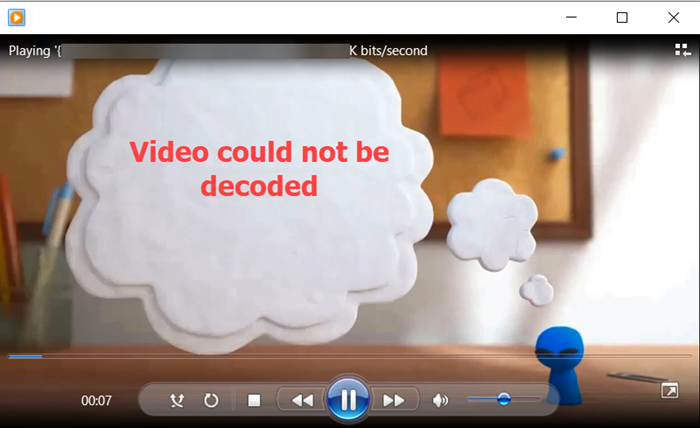Video could not be decoded on Windows 11/10
It can be annoying to see the unsupported video codec or format errors in Windows as these errors don’t let you play videos or edit them. Nevertheless, you can try a few workarounds to help you get past the Video could not be decoded problem. A video file in general comprises 2 components.
A codec – Required to encode or decode the video data.A container – A file format containing the file metadata.
If the media player of your choice doesn’t support the video format or codec, it won’t play the video file.
1] Disable and re-enable the software
If you face this issue on Windows MediaPlayer, do this.
If you are experiencing a problem with the Windows Media Player, you’ll need to use the Windows Features panel to remove the software and then, add it back. This is because, the program is a built-in Windows 10 component.
Type turn windows features on or off in the Windows 10 Search box and hit Enter.Next, scroll down to Media Features.Tap the ‘+’ button next to it to expand the menu.Uncheck the box marked against Windows Media Player.Select OK to remove the Windows Media Player.
Restart your computer.
Go back to the Windows Features box.Check the box next to Windows Media Player.Select OK to reinstall the Windows Media Player.
This will again enable the Windows Media Player. If you face this issue on a UWP Microsoft Store app, Repair or Reset it. If you face this issue with your classic video player software, you could reinstall it.
2] Set the correct Audio Device
You can also check if the Windows Media Player is using the wrong audio output device. Head to the WMP Options. For this, go to the Tools menu. If you don’t see the menu bar use the Ctrl+M shortcut. Select Options and switch to the Devices tab.
Next, under the Devices section, choose Speakers and select the Properties button.
Now, choose the same playback device, you find under the system tray when you click the speaker icon.
3] Convert the video file format
You can choose a different format that is compatible with your player. In many cases, it has been found that AVI, MP4 or MOV files are compatible with most media players and video editing software.
4] Use the Registry hack
The Windows Media Player often relies on a set of specific entries to play audio and video files. These entries can be found under the Registry Editor. You can check if the values within these entries are correct or have been changed. We recommend that you make a backup of the Windows Registry before going ahead. Do the following. Press Win+R in combination to open the Run dialog box. In the Empty field of the Run dialog box, type regedit and select OK. Making changes to the Registry Editor incorrectly can have serious consequences. Create a System Restore point before proceeding further. Navigate to the following path address – On the left-side navigation pane, select: Here, make sure the following registry entries contain the values given below.
CLSID — {083863F1-70DE-11d0-BD40-00A0C911CE86}FriendlyName — DirectShow FiltersMerit — 00600000
If some different value in a registry entry is visible, change it to the ones listed above. Simply, right-click the entry to be modified, choose Modify option, and change the values to the ones shown above. Select OK, when done.
5] Update your Display Driver
Updating your Graphics or Display driver has also been known to help. So try that and see.
6] Play the video on a different Media Player
Lastly, if all the above methods fail to yield the desired results, you can switch to a different Media Player like VLC Player. Hope something help.

